Curiosities
Is Jeff Koons as Passionate About Uniqlo as He Sounds? Why Is This Unicorn Named After Picasso? + Other Questions I Have About the Week’s Art News
More importantly: What was Michael Crichton doing on a road trip with Jasper Johns?
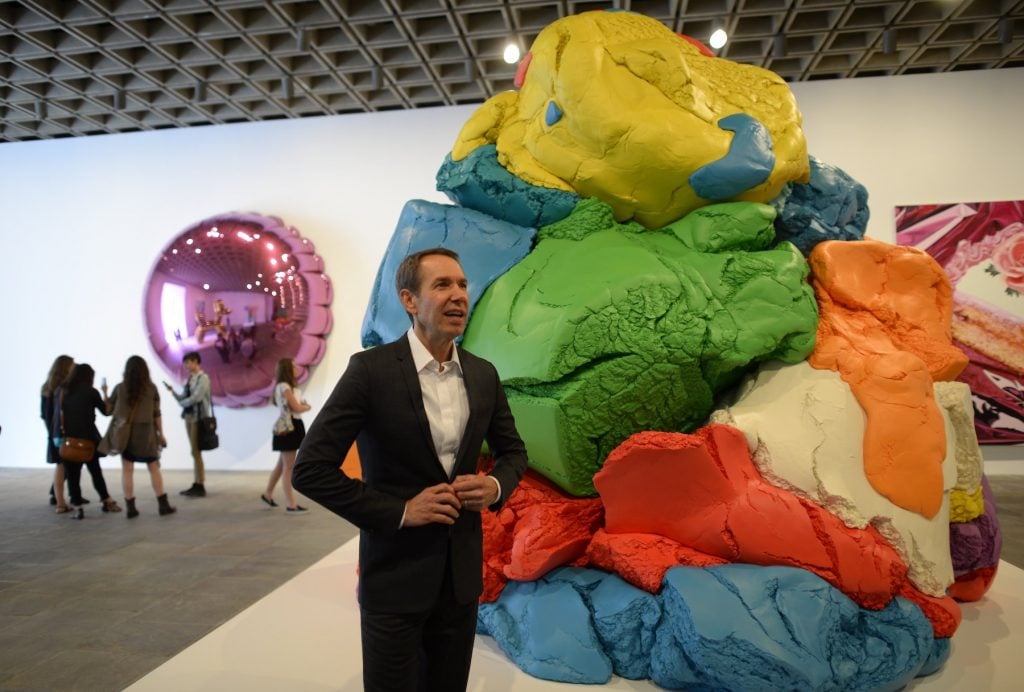
More importantly: What was Michael Crichton doing on a road trip with Jasper Johns?

Ben Davis

Curiosities is a column where I comment on the art news of the week, sometimes about stories that were too small or strange to make the cut, sometimes just giving my thoughts on the highs and lows.
Below, some questions posed by the events of the last week…
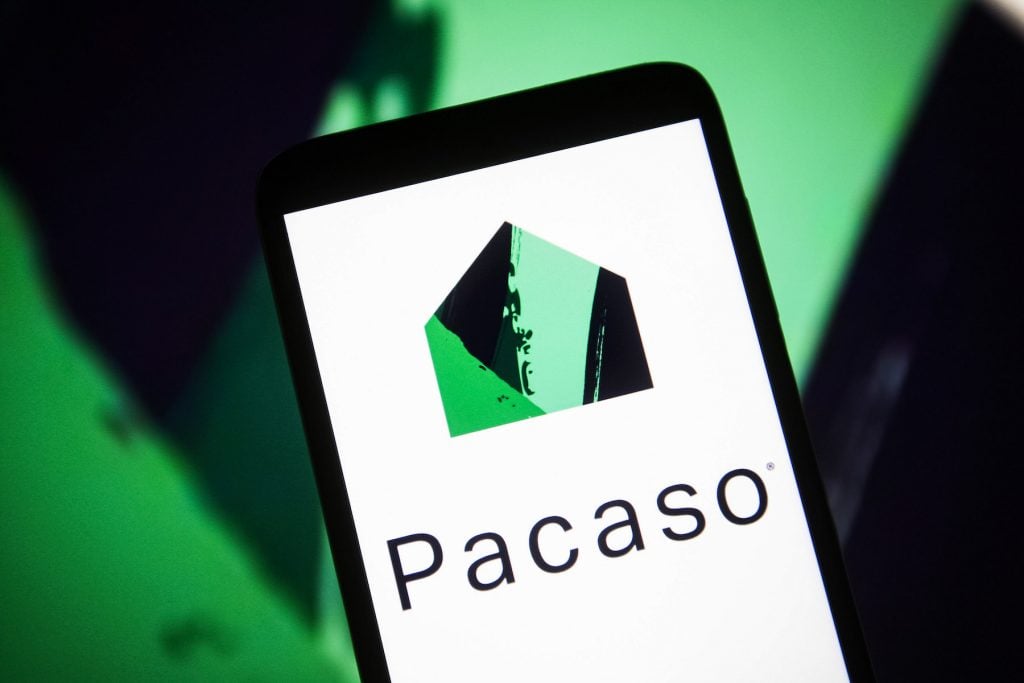
The logo of property co-ownership sales and management platform Pacaso. (Photo Illustration by Pavlo Gonchar/SOPA Images/LightRocket via Getty Images)
Founded just last year, Pacaso is, I’m told, the youngest start-up ever to reach “unicorn” status—a valuation of more than $1 billion. A glorified time-share scheme that promises to “democratize second home-ownership,” its mission is to finally let America’s wealthier enclaves taste the joys of having your neighborhood become an Airbnb hotspot by selling fractionalized stakes in mansions in places like Napa Valley.
Since you are reading an art site, you are probably already wondering, “Is the name inspired by… you know…” The answer is yes. And the answer to your follow-up question—”does Pacaso’s innovative model of fractional real-estate investment carry on the legacy of Cubism?”—is also yes.
From the company’s Our Story page:
We are inspired by Pablo Picasso’s revolutionary thinking, the way he challenged norms in early 20th century art. He is credited with co-creating Cubism, which brings together individual elements to create a new and innovative whole. That resonated with how we’re approaching second home ownership. We decided on Pacaso to honor Picasso’s legacy of innovation.
And, truly, what an honor it is! Per Planet Money, “No Pacaso” signs are quickly becoming a hot accessory in the nation’s tonier areas. Some poor sap who bought 1/8th of a $4 million mansion recounts showing up for his slot at his new vacation home—which had been dubbed the “Chardonnay” house by Pacaso—only to be greeted by a sign that read, “The Pacaso House Is the Big One on the Right With No Soul.”
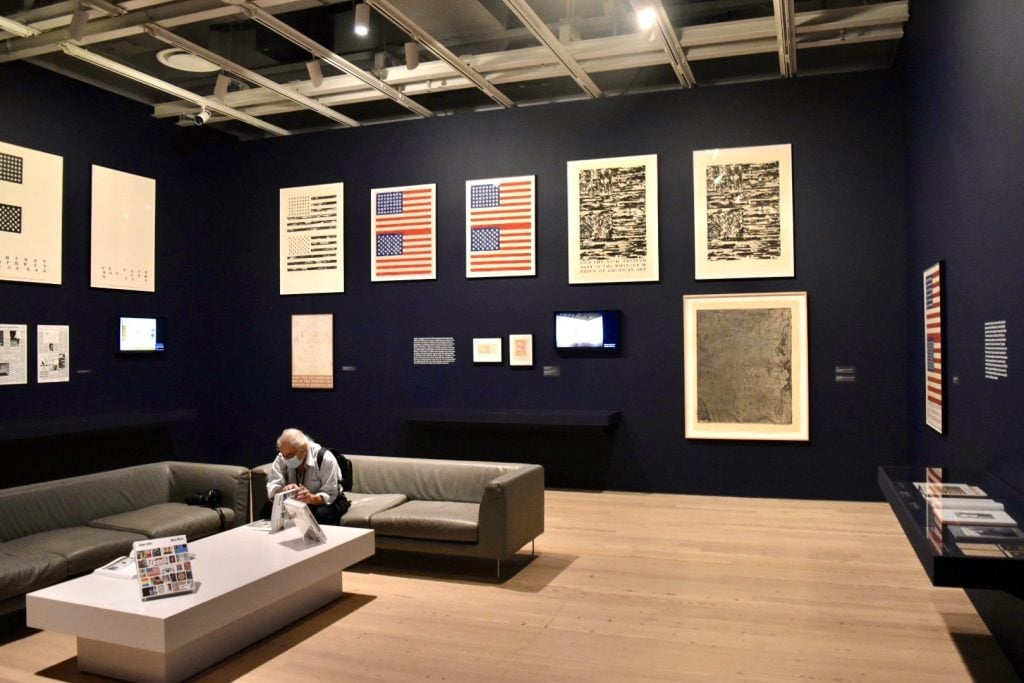
Installation view of the “Jasper Johns and the Whitney” in “Jasper Johns: Mind/Mirror” at the Whitney. Photo by Ben Davis.
Here’s a bit of trivia I didn’t know until I went to the “Jasper Johns and the Whitney” room of the New York museum’s new Johns-travaganza. Just after Michael Crichton wrote and directed the original Westworld in 1973—but long before he wrote Disclosure, created ER, or became one of the world’s most high-profile climate-change deniers—he had a side hustle writing art catalogues. Specifically, the catalogue for Jasper Johns’s 1977 Whitney retrospective.
Let me tell you the story. Johns wanted someone to write about him who was “not an art critic.” By his own admission, Crichton had never even read an art catalogue, so he was perfect. Asking around, Crichton couldn’t find anyone who had ever actually read one either, and decided that what people wanted was facts about the artist and the works—“none of that art interpretation stuff.”
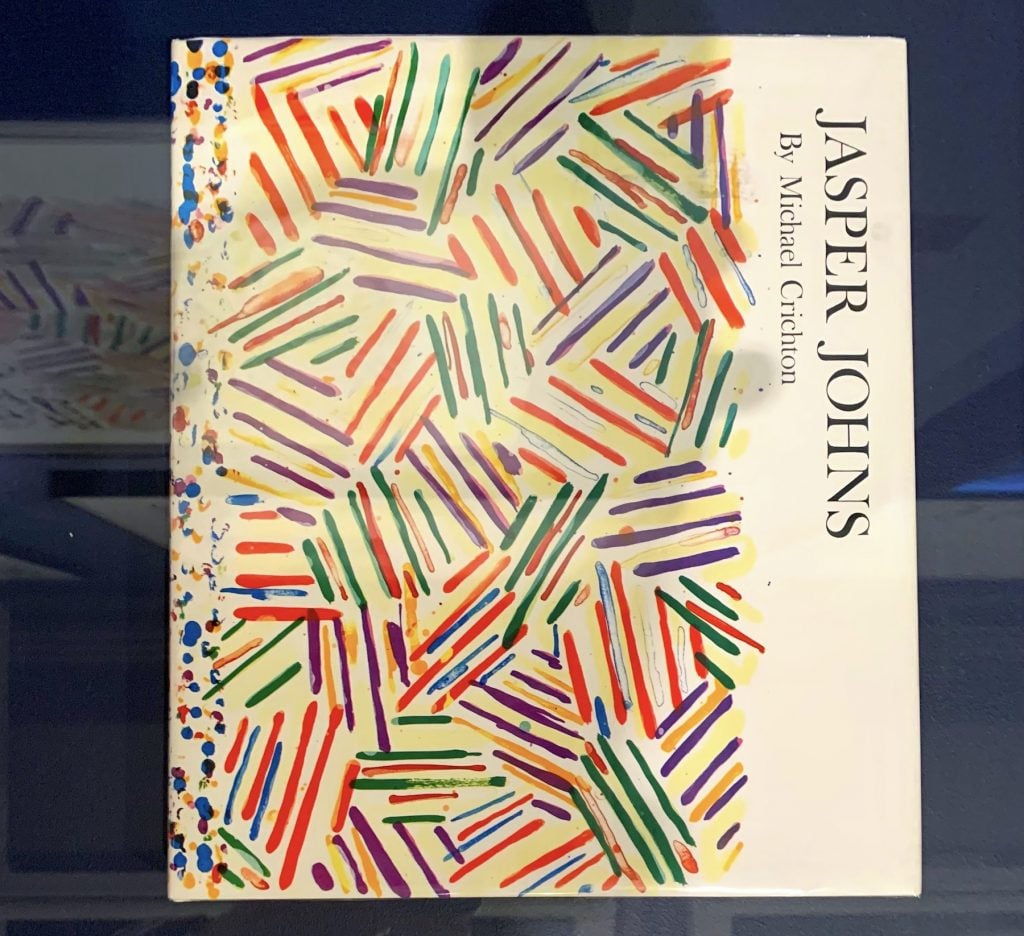
Copy of the 1977 catalogue for Jasper Johns’s Whitney show, on display at the Whitney. Photo by Ben Davis.
Honestly, this is not bad advice! I hate it when you open a catalogue looking for historical context and instead get 30 pages of musings on Giles Deleuze or Fred Moten.
Despite his “just the facts” approach, Crichton’s catalogue contains a pretty fun account of a car trip he took with Johns where the artist resolutely refuses to offer directions to get where they are going:
Once I drove him from his house at Stony Point into New York City. We were going to some destination I did not know. I asked him how to get there. “Well, I’m not sure, I’ll know when I see it, as we go.”
We drove for a while longer, crossing the George Washington Bridge. I asked again. “Well, I don’t know. Turn right here, and we’ll figure out the rest later.”
I love how closely the description of a Jasper Johns outing follows his well-known art-making mantra: “Take an object / Do something to it / Do something else to it [Repeat].” Or, as Crichton narrates Johns’s thought process, “We are going down this street now, and when we get to the end, we will decide which way to turn, and having decided that, we will wait until it is time to make another decision.”
Jasper Johns: important proto-Pop painter; problematic road trip buddy.
Crichton accepted a small painting from Johns in lieu of payment, and according to author Don Thompson, he later turned down $5 million for it from Larry Gagosian. For that reason, the 1977 Whitney Museum catalogue is sometimes regarded as the most lucrative piece of art writing ever done.
Playboy has enthusiastically gotten into the NFT game. On the one hand, it is looking to sell its back catalogue of vintage cheesecake as NFTs; on the other, it is out to smash the patriarchy.
Specifically, the magazine has partnered with the Sevens Foundation on a new NFT commission (open to applicants through October 1!) called “The Art of Gender and Sexuality.” The initiative, we read, recognizes that “the fight for equality and representation that continues to define the art world at large is particularly urgent in the fast-moving world of NFTs, a primarily cis-male dominated space.”
I would make a joke here about how “I support Playboy for its social justice mission to decenter the digital art world” is the new “I read Playboy for the articles”—but, you know, Playboy did publish some pretty good articles. Do with that fact what you will.
“Sophisticated pop artworks by one of the greatest contemporary artists, Jeff Koons!” boasts the website of Uniqlo, the fast-fashion juggernaut from Japan that has just launched a Koons capsule collection in coordination with the soon-to-open “Jeff Koons: Lost in America” show in Qatar. The exclamation point proves they are excited.
This initiative is all about celebrating craft, according to the interview with Koons on the project’s micro-site (which also features interviews with curators Massimiliano Gioni, Elena Geuna, and Yuko Hasegawa). The clothes, though, mainly just feature the words “JEFF KOONS” next to a small image of a Koons klassic such as Balloon Dog and Rabbit, printed on basic cotton Ts and sweatshirts. Sophisticated!
It’s not just that the Koons x Uniqlo Collection doesn’t push the boundaries of clothing design. It’s that it has a distinct RedBubble vibe, like the team shirts your boss makes you for a company picnic.
Here’s Koons waxing Koonsian about Koons x Uniqlo in a series of words that sound as if they have been put into Google translate from English to a foreign language and back again (but he speaks with such conviction!):
I enjoy very much how Uniqlo is in contact with my generation but also a younger generation and it really communicates across cultures and everybody enjoys very much their clothing. We are just people who are seeking to be connected with each other. By working with Uniqlo, making a T-shirt that can be connected and communicate to somebody else that I care about them—I embrace that opportunity.
Of the collection’s various options, the most audacious has to be the Jeff Koons sweatshirt featuring his work Play-doh (1994–2014). I assure you that as a work of art, the massive, precision-designed Play-doh actually is impressive in its craftsmanship when you see it in person. The scale is really what makes it.
But when the image of a sculpture that looks like a super-sized mass of multicolored Play-doh is printed at small scale, without context, on a gray Uniqlo sweatshirt, you lose something. I have to say, the first thing you think of is a sturdy, rainbow-hued mound of doggy-doo (perhaps from his Flower Puppy).
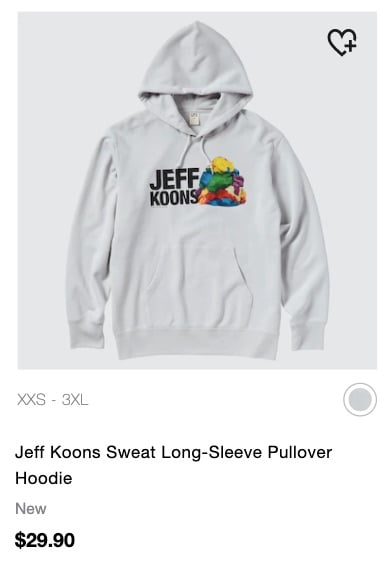
Screenshot of Jeff Koons x Uniqlo sweatshirt featuring Play-doh on the Uniqlo website.
But remember, always remember: the message of the shirt is that Koons cares about you.